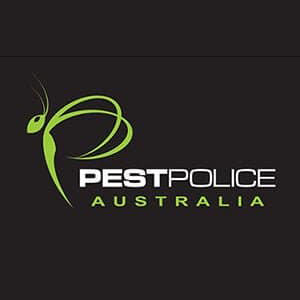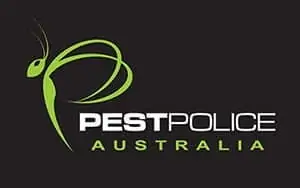When you returned to work, did you find some new, little coworkers already moved in? Ants are pretty active in the spring and early summer, gathering food and reestablishing their colonies. In order to keep ants out of your office, you must get rid of scouts, find the nest, and stop them from coming back.
Ant removal is challenging. Although maintaining a clean environment is essential, ants can get inside through microscopic crevices and will feed on tiny crumbs. It’s difficult to deter them. With a bit of knowledge and guidance from pest control experts, you can stop their sublease if your office has an active ant infestation.
What Are the Common Ants in Australia?
There are currently about 15,000 identified ant species and subspecies worldwide, with Australia home to 10% of them. Every Australian state and territory has ants. Forests and bushes are where you can find the majority of them.
Brown House Ants
Brown house ants (Doleromyrma darwiniana) are a species of ant that nest similarly to coastal brown ants. They can reach a size of 2.0 mm to 3.0 mm and are brown in colour. Because of the formic acid in their bodies, they give off a distinct odour when crushed. High-protein foods make up the majority of their diet.
Coastal Brown Ants
(Pheidole megacephala), a species of ant that typically inhabits structures, roads, and rocky terrain and scatters dirt and other debris. They range in length from 1.5 to 3.0 mm and are light brown or brown in colour. Proteins and lipids make up the majority of their diet. There are minor and major army classes in coastal brown ants. The head of a giant soldier ant is bigger.
Argentine Ants
An ant species called Argentine Ants (Linepithema humile) originated in South America. Since the 1950s, they have been the target of numerous eradication campaigns since they are considered a major pest. These ants hide in bushes or logs or build their nests in exposed soil. They range in size from 1.5 to 3.0 mm and are either light brown or brown in colour. They have the potential to be highly aggressive, driving other ants and animals away from their nesting and dwelling locations. Sugary foods, meat, insects, and seeds make up their diet.
Pharaoh’s Ants
In Australia, Pharoah ants (Monomorium pharaonis) are an uncommon species. However, they are widespread in Europe and the USA. Due to their preference for warm environments like heating ducts, these ants frequently construct their nests within buildings. Their colonies are enormous and may contain several queens. When there is danger, like insecticides, these queen ants often leave their nests and establish other colonies. Pharaoh’s ants typically range in size from 1.5 mm to 2.0 mm and are either yellow-brown or dark brown in colour. Foods high in protein, fat, and sugar make up their diet.
Singapore Ants
Ants like Singapore ants (Monomorium destructor) nest in comparable places as coastal brown ants. Sadly, they can bite through plastic and rubber and occasionally nest in electrical switch boxes. They range in size from 2.0 to 3.0 mm, are light brown in colour, and have a darker posterior abdomen. They can sting and bite very hard. They eat meat and sweets together in their diet.
Odorous Ants
Odorous Ants, also known as Tapinoma minutum, establish their nests inside structures and in spaces between walls. They range in size from 2.0 to 3.0 mm and are brown to dark brown in colour. They devour meat, sweet foods, and scraps from the house.
Why Are There Ants in Your Office?
Ants are social insects with a complicated caste structure made up of males, queens, and workers. The colony is maintained through the precise roles that each ant plays.
Ant colonies dispatch scouting expeditions to look for new resources and habitats when food supplies are low or shelter is in short supply. These scouts report back to their superiors with their discoveries when they come across your office pantry or a pleasantly warm, wet place in the wall behind HR.
The ant colony will create an ant trail using pheromones as breadcrumbs to direct other temporary workers to their new job in your building. They might even start a satellite colony in some circumstances far from the primary nest.
What Attracts Ants to Your Office?
If ants think your office would make a great place for their nest, they will surely invade your space. The most frequent things that could unknowingly draw ants to your office are listed below. To avoid an ant infestation in your office space, inspect and handle them correctly.
Water Source
If ants have access to clean water, that’s one of the main reasons they’ll come to your office. For ants to survive, they need access to water. In addition to drinking to quench their thirst, they also bring water back to the colony. Thus they will search for a permanent source. Ants will leave a pheromone trail to help other ants discover a good supply of water when they do.
This is why ants frequently build their nests in bathrooms and pantries. Due to the high moisture content of the bathroom sink and tiles, some ants can decide to nest there. To avoid ants, you should regularly clean your office bathroom to remove any extra water.
If your pantry has a sink, this can also serve as a freshwater supply. If you see ants in your pantry, search for the nest by looking under your sink, water fixtures, and near pipes.
Food Source
The ant diet consists of proteins, fats, and carbs, just like the diet of any other animal. Before building a nest, they will search for a reliable supply of each of the three.
Numerous ants are drawn to sugar because it has a high carbohydrate content. You might unintentionally attract ants if you frequently spill food around your office or leave open food containers on workstations and pantry shelves.
The trash bin is yet another location where ants might search for food. You shouldn’t keep food in a can for more than a day or two. Try to dispose of the trash once every day or whenever the container is full. Don’t leave it unattended for days. The food residue will begin to release a strong odour after a few days, drawing ants.
Safe Nesting Environment
You must prevent ants from entering your office space after making sure all water and food sources are removed. They don’t need much room to creep in but won’t push their way inside.
Therefore, if there are ants in your office, it is likely that there are easy entrance spots in the walls or around the doors and windows.
Tips to Avoid Ant Infestations in Your Office
You must be fortunate enough to have already dealt with your ant infestation. Still, if you haven’t yet, we highly advise that you use the following straightforward yet powerful preventive tips to avoid ant infestation in the future:
Get Rid of the Scout Ants Before They Return to the Colony
Scout ants are serious about their work! They must locate the food sources and return to the colony bearing information about where to obtain them. If you see any lone ants wandering around your workplace or pantry, we advise getting rid of them, cleaning up any signs of a possible trail, and getting in touch with professionals for an ant control treatment.
Fill Walls and Cracks on the Interior and Exterior of Your Office
You should fill wall holes and cracks on the interior and exterior. Patch any holes around windows and doors, then caulk the frames. If you discover that the window frames around your office are decaying, you should have them fixed because it gives ants access. While you won’t completely prevent every ant from entering your office, you will prevent an infestation.
Store Food in Airtight Containers
Ants frequently visit food items kept in open containers and feed on them, especially if they contain sugar. The ants will return, making your workspace a prime target for them.
Thus, you must keep food items stored in airtight containers if you want to combat an ant infestation.
Always Keep Your Office Clean
This is the simplest and most effective approach to prevent an ant infestation. Ants swarm in search of food to ensure the survival of their colony. Ants won’t need to search if you keep food and debris out of their reach, and even if they do, they won’t find anything at all. We advise the following to maintain your office clean:
- Clean up any leftovers – To prevent attracting ants, never leave leftovers out on the workstations, in the sink, or on the countertops of your pantry. Remember to keep any leftover food in airtight containers.
- Clean and sanitise areas where you eat – We don’t only eat in the pantry. You’re likely to have a snack at your workstation as well. Regularly clean and sanitise these surfaces to remove any food residue that can attract ants.
- Dust and vacuum regularly – Any more food debris won’t remain on surfaces and your office floor if you dust and vacuum regularly.
- Dispose of any trash – Don’t leave your trash lying around for ants to find; take it out!
- Contact reliable pest control professionals and keep up with routine maintenance treatments – There is no way to get rid of ants totally, but if you have an ant infestation and decide to hire a professional to handle the situation, it’s also crucial to continue regular treatments every year to keep your office ant-free!
Get Rid of Office Ant Infestation with Pest Police
Ants are a common issue in offices. The good news is that they are rather simple to deal with. Keep your workspace tidy and free of food, then close any openings the ants can use to enter.
Once you’ve done that and still have problems with ants, don’t worry; the professionals at Pest Police can handle even the worst ant infestations.
Eliminate your ant infestation with the assistance of Pest Police Ants Removal Services. We offer ant control in Melbourne and also work to treat and get rid of any other typical pests that are found in and around homes and offices. So, if you feel, or are certain that you have a problem with ants in your Melbourne property please contact us to speak with our Pest Police ants extermination and Removal Service experts now.

